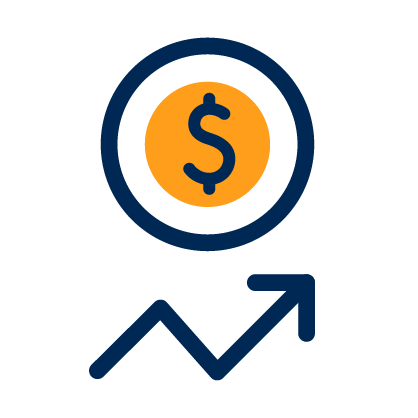Currency chart
AUD/USD currency chart: 1.00 AUD = 0.6512 USD
AUD decline extends into its ninth consecutive day
Daily Currency Update
Another tough day for the Australian dollar, driven lower by a souring China outlook and stronger than anticipated US macroeconomic data. Market expectations for China’s growth outlook cooled further through trade on Thursday, extending losses across local and regional equity markets and commodity prices. Bloomberg’s industrial metals index has fallen 9% over the last nine days and is down near 20% since hitting a 2024 peak in May. The move has heightened risk aversion, exacerbating AUD declines. With the US GDP data surprising to the upside overnight, the AUD slumped to intraday lows at US$0.6515, before finding support. It has been a remarkable reversal these last two weeks after kissing US$0.68 on July 10, the AUD has marked lower lows through the last nine trading days. The question now, has the move been overdone? The AUD did find support, bouncing back toward US$0.6540 into this morning’s open, yet whether this constitutes the beginnings of a broader recovery remains to be seen. We are keenly watching direction and sentiment through Friday in preparing expectations for AUD performance next week.Key Movers
There is plenty to digest this morning as markets absorb a stronger than expected US GDP data print. Real GDP growth accelerated 2.8% in the 2nd quarter, well up on Q1 and streaks ahead of consensus estimates. Details showed consumer spending remains a key driver, while business investment remains strong. The robust print shows a US economy that is coping remarkably well with tighter monetary policy conditions and suggests there is little urgency for the Fed to start its easing cycle until inflation is back to target. Markets have all but priced out any chance of a rate cut next week and are instead focused on tonight’s PCE deflator index as a key marker for inflation.The Swiss Franc was the days outperformer, buoyed by the broader risk off narrative, while the yen tracked sideways and the euro proved resilient.
Our attentions turn now to Japan’s Tokyo CPI inflation report and US inflation data as key markers for direction into the weekly close.
Expected Ranges
- AUD/USD: 0.6480 – 0.6600 ▼
- AUD/EUR: 0.5980 – 0.6050 ▼
- GBP/AUD: 1.9500 – 1.9800 ▲
- AUD/NZD: 1.1030 – 1.1150 ▲
- AUD/CAD: 0.9000 – 0.9100 ▼
Currency charts made easy
Our currency chart helps you review different currency pairs and analyse exchange rate trends. All charts are interactive, and use mid-market rates. To see a currency chart, select your two currencies, with major currencies displaying up to 30 years of history.
Send money to over 170 countries (and counting)
Quick, secure, global payments to more than 50 currencies
AUD Snapshot
- Currency name: Australian dollar
- Currency code: AUD
- Currency symbol: $, A$
- Central bank: Reserve Bank of Australia
- Reserve currency: The Australian dollar is considered a reserve currency.
- Safe haven: The Australian dollar is not considered a safe haven currency.
- Countries used in: Australia
- Major unit: One Australian dollar
- Minor unit: One cent
- Minor units (cents) per Australian dollar: 100
- Note denominations: $5, $10, $20, $50
- Coin denominations: 5¢, 10¢, 20¢, 50¢, $1, $2
The Australian dollar is the official currency of Australia, including its external territories: Christmas Island, Cocos Islands, and Norfolk Island. It is officially used as currency by three independent Pacific Island states: Kiribati, Nauru, and Tuvalu. It is legal tender in Australia.
USD Snapshot
- Currency Name: United States dollar
- Currency Code: USD
- Currency Symbol: $, US$
- Central Bank: Federal Reserve
- Reserve Currency: The United States dollar is considered a reserve currency.
- Safe Haven: The United States dollar is considered a safe haven currency.
- Countries Used In: United States
- Major Unit: One United States dollar
- Minor Unit: One cent
- Minor units (cents) per United States dollar: 100
- Note Denominations: $1, $5, $10, $20, $50, $100
- Coin Denominations: 1¢, 5¢, 10¢, 25¢, 50¢, $1
The United States dollar (symbol: $; code: USD; also abbreviated US$ or U.S. Dollar, also referred to as American dollar, or informally known as the 'buck') is the official currency for the USA, Ecuador, El Salvador, British Virgin Islands, Turks and Caicos Islands, Caribbean Netherlands, Palau, Federated States of Micronesia, Marshall Islands, and East Timor.



